They Live By Night (1948)
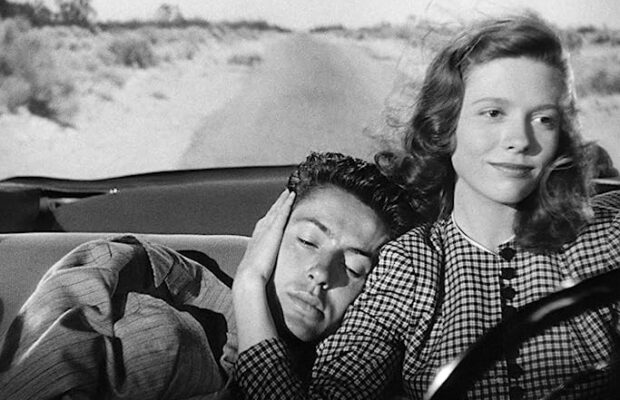
Toronto Film Society presented They Live By Night (1948) on Monday, August 21, 2023 as part of the Season 75 Summer Series, Programme 2.
Producer: John Houseman. Distributor: RKO Radio Pictures. Director: Nicholas Ray. Screenplay: Charles Schnee, Nicholas Ray. Cinematography: George E. Diskant. Film Editor: Sherman Todd. Music: Leigh Harline. Released in August 1948 in London, November 5, 1949 in the US.
Cast: Cathy O’Donnell (Keechie), Farley Granger (Bowie), Howard Da Silva (Chickamaw), Jay C. Flippen (T-Dub).
Some directors start their careers already fully formed as storytellers. That was the case with Nicholas Ray, whose They Live by Night not only brought new sensibilities to film noir but also ended up becoming the inspiration for many films to come that used the same trope of “lovers on the run” that exploded into the stratosphere in the 60’s with Bonnie & Clyde.
Ray had a keen eye for stories that seemed to break the mold of what was expected of their genres. Johnny Guitar with westerns, Rebel Without a Cause with teenagers and They Live by Night with noir. These titles don’t fit completely into what existed at the time, and they are better movies for that.
Legendary actor/producer John Houseman suggested Ray should try his way with this story. Based on Edward Anderson’s book Thieves Like Us, there had been several attempts by RKO in previous years to adapt the Depression era novel into a film, but none of them proved successful. Ray connected with the material and felt he could bring an interesting point of view to it. And he was right. They Live by Night may start as a noir, but by the end it fleshes out new layers to its story that make it feel unique.
It’s the story of Bowie (Farley Granger), a young man wrongfully accused of a crime who just escaped from prison with two older, sinister criminals, T-Dub (Jay C. Flippen) and Chicamaw (Howard Da Silva). They look for shelter with Chicamaw’s brother Mobley (Will Wright), who lives in a somewhat isolated farm in rural Texas with his young daughter Keechie (Cathy O’Donnell). Bowie and Keechie slowly begin to gravitate towards each other. When Bowie suffers an injury from a car crash, he needs to stay back on the farm while the other two men decide to head their separate ways. And while he is taken care of by Keechie, they fall in love and leave the farm behind too, trying to find a place where they can leave in peace without being found by the cops.
The production faced budget constraints and time limitations. Ray’s vision and direction, however, managed to work around these limitations, emphasizing emotional depth and character development over elaborate sets. The casting of Farley Granger and Cathy O’Donnell was a significant decision. Their chemistry and performances became pivotal in driving the emotional core of the film. Ray’s collaboration with the actors allowed them to fully inhabit their characters, contributing to the film’s authenticity.
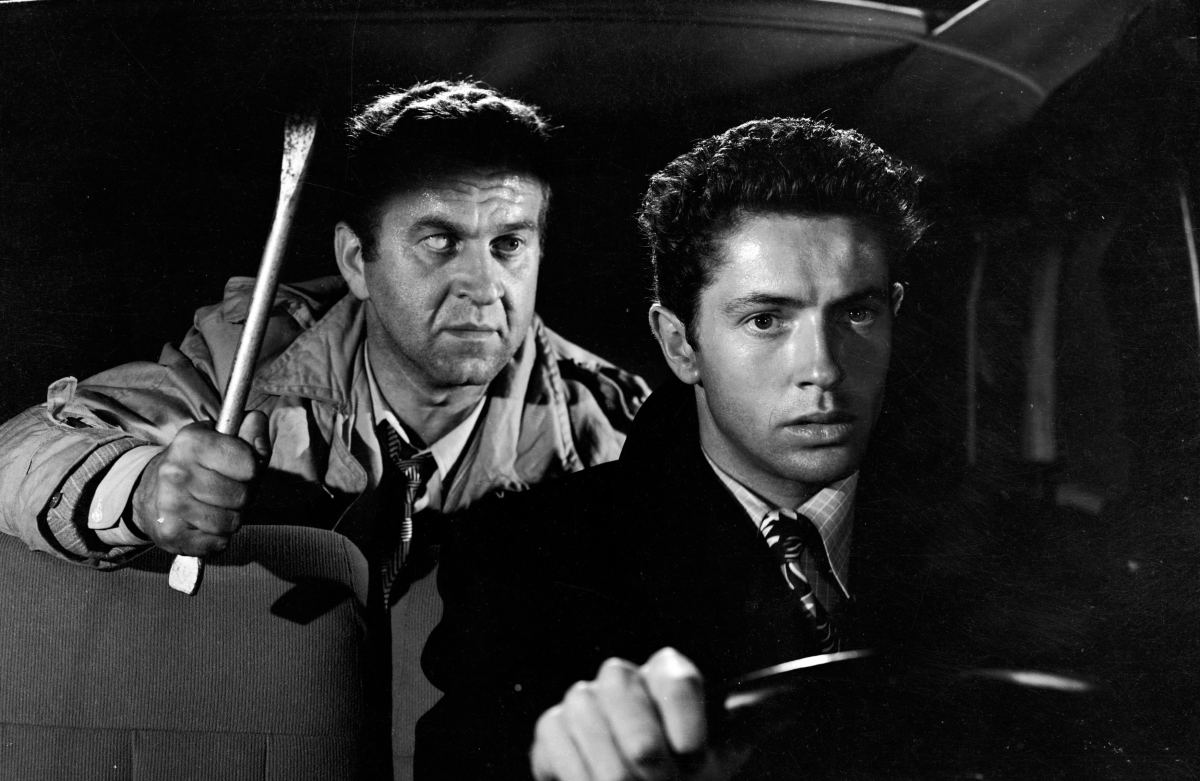
The noir genre had very specific traits that were expected to show up in every film. Criminals, dubious behaviour, and morality questions were always part of their narrative, and they are all present here. In many cases, the characters were doomed from the start and there was very little hope left. This is a trait that Ray diverges from a bit, giving these characters, especially Bowie, a sort of melancholia that puts him under a softer light. When he falls in love, we want these two characters to find a way out. In a way, They Live by Night resembles some 30’s prison films such as I Am a Fugitive from a Chain Gang, giving us a character that is not a heartless criminal, but a man who might have made mistakes in his life but is trying to make amends and lead a better life from now on.
That aspect of social commentary was present in the book and was the reason that attracted Ray to the project, and he intended to make both the love story and the political elements work. Bowie being wrongfully convicted and losing his youth in prison brings a level of sadness and wasted potential to the film, creating an interesting balance between the heavy and hopeful elements of the story.
Nicholas Ray’s direction brings a sense of emotional intensity to the film, as he weaves the couple’s relationship with elements of crime, fate, and societal constraints. The film’s noir aesthetics are marked by moody cinematography, stark lighting, and atmospheric settings that reflect the characters’ internal struggles and the world they inhabit. But lest not forget, this is still a film noir, and we all know what that means: it will not end well, which makes the ending even more heartbreaking.
But the main element of film noir is absent here: the femme fatale. Keechie is far from it; on the contrary, she is a young woman who fights to make things better for her and Bowie. There’s no hidden agenda with her. Her love for him and both their vulnerabilities ground the movie in deeper ways, and Ray never shies away from showing us their understanding that their love story is doomed from the start. Their desperate desire to make things work out only makes everything more tragic as the story progresses.
At the time, the audience didn’t connect with the film, and it makes sense. They might not have been expecting to find such a strong depiction of societal constraints as the movie presents. For someone looking for a mild entertainment picture, They Live by Night gave us much more to think about.
Bowie’s wrongful conviction and subsequent escape brand him as a criminal in the eyes of society. This criminal stigma limits his opportunities and forces him to live a life on the run, unable to break free from his past. He and Keechie struggle to make ends meet due to their lack of resources and education. Economic hardships restrict their ability to escape their criminal pasts and create a stable future for themselves. The characters’ limited options are a result of their criminal records and societal perceptions, and they end up trapped in a cycle of crime and desperation, as they are denied legitimate means of earning a living.
The notion of predetermined fate is pervasive throughout the film. Bowie and Keechie’s circumstances are largely dictated by their criminal backgrounds, and their attempts to escape this predetermined fate are met with challenges at every turn. Society’s lack of trust in former convicts is a significant constraint. This lack of trust is exemplified in the characters’ interactions with others, making it difficult for them to establish genuine relationships or find people willing to help them. The film also touches on the theme of institutional injustice. Bowie’s wrongful conviction and incarceration highlight the flaws within the criminal justice system, showcasing how individuals can be trapped in a cycle of crime due to systemic issues.
These societal constraints collectively contribute to the feeling of hopelessness and entrapment that surrounds Bowie and Keechie. The film uses these constraints to underscore the challenges faced by marginalized individuals and the difficulty of breaking free from a predetermined path. Despite their desire for a better life, external forces often conspire to maintain the status quo, ultimately shaping the tragic trajectory of the characters’ lives.
Nicholas Ray brought his distinctive style and creative vision to the film, contributing to its unique and enduring qualities. Known for his innovative approach to storytelling and his ability to delve into complex characters, Ray’s direction played a significant role in shaping the tone and impact of the movie. His use of visual and narrative techniques also stands out in the film. He often employed unconventional camera angles, lighting, and compositions to create a sense of intimacy and tension. These techniques serve to immerse the audience in the characters’ experiences and emotions, intensifying the impact of key scenes.
Furthermore, Ray’s ability to balance the film’s elements of crime, romance, and tragedy is noteworthy. He navigated these genres with finesse, weaving them together into a cohesive narrative that evokes empathy and engagement. Ray’s direction allows the audience to feel sympathy for Bowie and Keechie’s circumstances while also recognizing the complexities of their choices.
Nicholas Ray’s direction in They Live by Night ultimately created a film that goes beyond its crime drama premise, delving into themes of love, yearning, and the pursuit of a better life. His ability to capture human emotions and conflicts in a genuine and relatable way adds depth and complexity to the characters and their journey. Ray’s influence on the film’s style, tone, and storytelling is a testament to his skill as a director and his impact on the world of cinema.
While the film did not achieve commercial success upon release, it received good reviews, and it gained recognition over time as a significant work of American cinema. It influenced and inspired titles like Bonnie & Clyde, Natural Born Killers, The Getaway and Badlands and is now considered a cult classic.
Notes by Leandro Matos
Sources: https://www.sensesofcinema.com/2002/cteq/they_live/
https://www.slantmagazine.com/dvd/they-live-by-night/
https://www.classicfilmnoir.com/2022/11/they-live-by-night-1948.html
https://www.screenslate.com/articles/they-live-night-0
https://stanforddaily.com/2017/10/17/they-live-by-night-uncovers-a-soft-side-to-a-classic-criminal-couple/

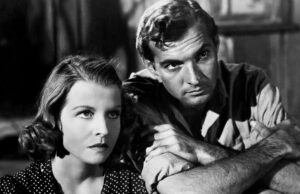
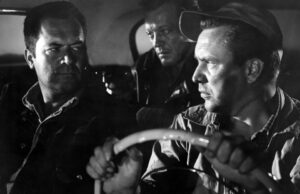
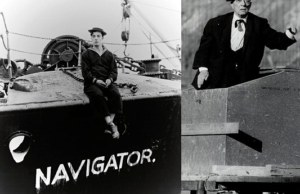






Leave a Reply